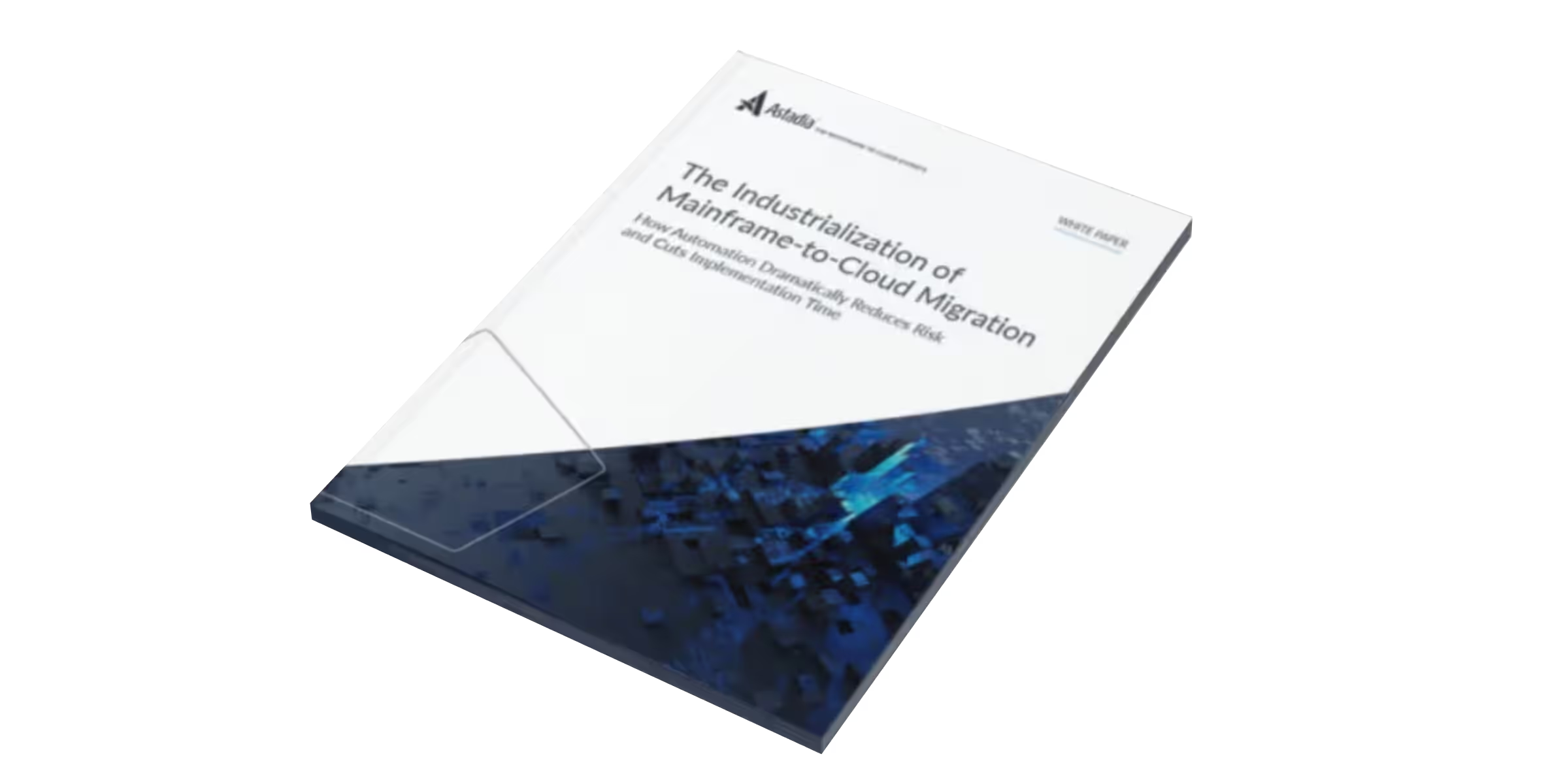In June of 2021, 21st Century Software Technologies announced that it had entered into a licensing agreement to acquire the source code for IBM’s z/VSE operating system. Tellingly, there doesn’t appear to be a corresponding announcement from IBM. Timed to coincide with that deal, 21st Century hired twenty-year IBM veteran Gonzalo Muelas Serrano to lead its z/VSE Center of Excellence in Germany. Reading between the lines, it’s abundantly clear that IBM is moving to discontinue their support for z/VSE once and for all.
For companies running older hardware, this could be the final nail in the mainframe coffin. Organizations running z13 and z13 mainframes were already in a tough spot after IBM discontinued support for those systems in early 2020. As the mix of unsupported hardware and software continues to grow, the case for mainframe modernization increases exponentially.
Like an old car that gets prohibitively expensive to maintain as its parts begin to fail, legacy systems are becoming more and more costly to support. At some point it makes more sense to bite the bullet and move to a modern platform.
Benefits of Modernization for z/VSE Shops
Many companies are reluctant to launch modernization projects because of the perceived risk and expense involved. After all, whole sale change can often be disruptive. As time passes and technology evolves, though, the costs and risks of doing nothing are growing even higher. With the right tools and guidance, the process of migrating your mainframe systems to the cloud can be smooth and predictable. Just as importantly, they can generate positive net ROI very rapidly, – in fact, much faster than most people think would be possible.
Mainframe costs
Mainframe operating costs are driven by fundamental economics; as the number of customers running a given legacy system declines, the companies that sell and maintain that system must recoup their costs from an ever-shrinking base of paying customers. Mainframe operating costs are increasing across the board. At the same time, the costs of distributed computing systems are going down. This is especially true of cloud-based environments, where cost/benefit ratios get better and better with each year that goes by.
Skills shortage
Modernization also solves another problem that has been growing more and more acute over the past several years. Mainframe talent is in short supply. While IBM and others have made overtures to a new generation of computer science graduates, few are taking an active interest in legacy technologies, preferring instead to focus on cutting edge technologies such as AI and data analytics, IoT and Industry 4.0 technologies, and cloud computing.
That leaves mainframe shops in a quandary. As the current generation of mainframe experts reaches retirement age, organizations that run legacy systems are competing for a shrinking pool of mainframe talent. The COVID pandemic has exacerbated that problem, prompting many to pull the trigger on retirement. At present, there are over 80,000 mainframe positions open worldwide, and that number is growing.

Technical debt
Finally, there are the technical limitations associated with continuing to operate on a platform that has reached its end of life. This is absolutely the case with z/VSE, as indicated by IBM’s decision to farm out maintenance and support of that operating system to 21st Century. IBM Middleware is part of that deal, but middleware is a poor substitute for technologies that were natively designed for integration in the cloud.
Agility
Despite the best efforts of IBM and their ISV partners to build web connectivity and integration hooks into their mainframe software, legacy infrastructure remains an impediment to change. For smaller shops running z/VSE, options are limited. Economic uncertainty, competitive pressures, and the pace of innovation all demand higher levels of business agility. Organizations must be prepared to change quickly, – to roll out new initiatives on relatively short notice and bring them to market quickly.

Monolithic systems and the waterfall approach to software development no longer work in our current environment. Today’s world calls for compartmentalization, interoperability, and microservices. It’s built on modern object-oriented programming languages, web services, and browser-based UI’s. It’s mobile friendly and intuitively designed.
In short, today’s world calls for so many things that mainframes simply don’t do well. Developing and maintaining legacy systems, – especially those that have reached the end of their life, is further and further out of touch with today’s business reality.
Modernizing your z/VSE Systems
There are several common approaches to modernizing legacy systems. Generally, we can break these down into two broad categories, – replatforming and refactoring. Astadia has introduced a third approach, the fully automated Migration Factory.
Replatforming applications involves transitioning to a new operating system, without changing the application code, its structure, or the features and functions of your business applications. Astadia has performed numerous replatforming projects, including IBM mainframe-cloud migrations to Microsoft Azure, AWS, and Google Cloud Platform.

The second common approach is refactoring, an automated approach to transforming mainframe source code into a modern object-oriented language such as Java or C#. The aim is to achieve functional equivalence with the source application, but to open the way for future development with a broader pool of programming talent and better integration to modern computing platforms. Astadia has decades of experience with refactoring as well.
The FastTrack Approach
There is a third approach, pioneered by Astadia, which we call the FastTrack Factory. Because it is fully automated, the Factory enables organizations to redesign, migrate to virtually any relational database platform, transform code to Java or C#, automate test scenarios based on actual user interactions, and validate the results. Because it is fully automated, FastTrack allows for unlimited iterations of testing and redesign, at virtually zero marginal cost. As a result, our clients can cut over to their new system with complete confidence that it will be functionally equivalent to the legacy system, and it will perform at least as well as (or better than) the mainframe it is replacing.
Astadia will work with your organization to assess your existing environment, assess the options for modernizing your z/VSE or other mainframe system, and forge a path toward successful migration. With three decades of experience in legacy modernization, Astadia has seen it all; we’re not limited to one-size-fits-all thinking. Before we talk about solutions, we learn your technical issues, business requirements, and context. Then we tailor a plan that fits your needs. From planning and migration, DevOps and testing, to managed services, we can guide you through a successful journey.
Visit our Resources section to learn more.
Related news
Related white papers:
Astadia Migration Factory
Learn what the industrialization of mainframe to cloud migration entails and how automation dramatically reduces risk and cuts implementation time in mainframe migration projects.
View more
Let's Talk
Get in touch with our experts and find out how Astadia's range of tools and experience can support your team.
contact us now






